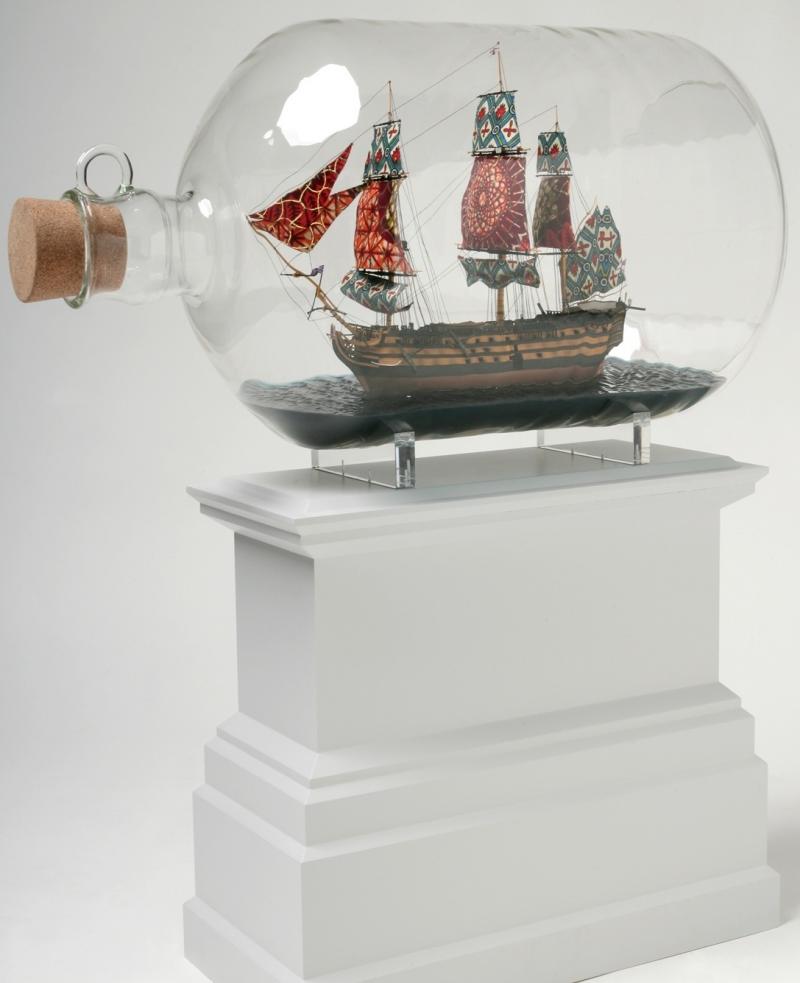


From his tall column in Trafalgar Square, Admiral Lord Nelson won’t be able to glimpse the new work on the Fourth Plinth, since he faces the other way.
Yinka Shonibare, an Anglo-Nigerian artist, was keen to reflect on the historical symbolism of Trafalgar Square, which was built to celebrate Britain’s victory in the Battle of Trafalgar in 1805. Indeed, he’s the first artist to respond to its historical legacy, for Nelson’s victory ensured that Britain ruled the waves, and that out of an empire a global market and eventually a multicultural city would arise.
Shonibare has said he is keen to celebrate the complex cultural relationships that are the outcome of Nelson's legacy. The ship’s 37 sails are made of Shonibare’s signature material: highly decorative Dutch wax textile. The fabric may be associated with Africa but the patterns are in fact Indonesian-influenced and were produced by the Dutch for sale to the African market. Today, Shonibare buys it in bulk from Brixton market in south London.
Links
[1] https://theartsdesk.com/users/fisunguner
[2] https://www.addtoany.com/share_save
[3] https://theartsdesk.com/node/1448
[4] https://theartsdesk.com/node/1526
[5] https://theartsdesk.com/visual-arts/marc-quinn-white-cube
[6] https://theartsdesk.com/dance/babel-words-sidi-larbi-cherkaoui-antony-gormley-sadlers-wells
[7] http://www.london.gov.uk/fourthplinth/
[8] https://theartsdesk.com/visual-arts
[9] https://theartsdesk.com/topics/london
[10] https://theartsdesk.com/topics/africa
[11] https://theartsdesk.com/topics/buzz